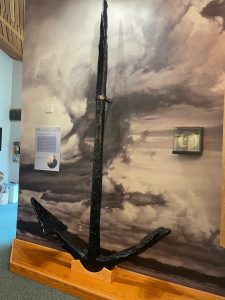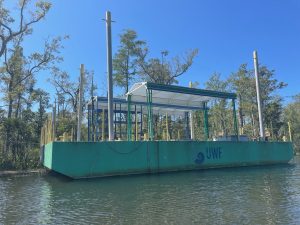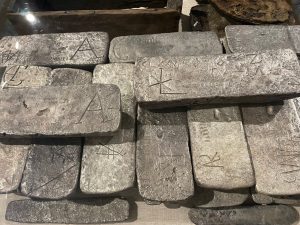
Pirates of the Caribbean was always my favorite ride at Disney. Being prone to seasickness, this low-key little water journey was as close as my childhood imagination could fathom to truly sailing the high seas. But that type of adventure always appealed to me even if, in reality, I’d have been miserable on a cross-Atlantic boat trip. Sailing a wooden ship for months through tempestuous seas or windless, hot days takes a level of fortitude I cannot quite muster. But, back in the day, plenty of folks did.
The Age of Exploration between the 15th and 18th centuries literally changed the face of the world. It fueled scientific exploration, trade, some really complicated politics, and spread devastating disease to the “New World.” For good or bad, our history and storybooks are filled with tales of the sea. And sprinkled among the triumphant stories are plenty of absolute catastrophes—a quick perusal of the Florida coast and our own Pensacola Bay are concrete proof of that. Just last month, two sailors were rescued by the US Coast Guard out in the Gulf. They had to abandon their sailboat, Lady Catherine III, amidst an unexpected storm, and the boat (seen in banner photo above) eventually washed ashore at Pensacola Beach.

My friends at the University of West Florida and Florida Public Archaeology Network are local experts on shipwrecks. UWF is home to one of just a handful of undergraduate maritime/underwater archaeology programs in the country. They regularly dive wrecks and have discovered three of the seven Tristan de Luna ships that sunk locally in 1559.

While the books and movies hype up troves of gold, silver, and jewels in shipwrecks, those are pretty few and far between. But they’re not unheard of. Perhaps the most famous example is the discovery of the Atocha, a ship laden with 40 tons of gold and silver that sunk during a hurricane in 1622 off the Florida Keys . According to one estimate, the findings totaled a value of $1.1 billion in today’s dollars. You can see much of this loot on display at the Mel Fisher Maritime Museum in Key West.
Most shipwrecks are less dramatic than the pirate dreams of treasure-laden chests. Ships are lost due to running aground, fire, bad weather, practice for military operations, or simply abandoned in the water when new technology renders them obsolete. Many of the ships off the Florida coast are more modern, associated with 20th century military operations or commercial and private vessels sunk up to the present day. Near Pensacola, the Oriskany and USS Massachusetts were scuttled Navy ships that now serve as artificial diving and fishing reefs.

While “shipwreck” often conjures images of big oceangoing sailing ships, we have an entire “Maritime Heritage Trail” further inland in the Blackwater River that includes wrecks of smaller boats in service after the colonial days. Most of these were intentionally left to break down and decay. Several of these boats were in frequent use in the 19th and early 20th centuries as transport for the busy brick and timber industries in our region. Others were used as ferry services and entertainment cruises for people in the days before bridges across Pensacola and Escambia Bays existed.
Abandoned shipwrecks located in Florida waters are considered property of the state, and looting or any other removal of historic artifacts is forbidden. Researchers and some commercial ventures with interest in specific wrecks must apply for an archeological or recovery permit from the state Division of Historical Resources. Like our state parks where we try to “take only photos, leave only memories,” these underwater museums are a place to “leave only bubbles” behind.
 7
7
